Date: April 1, 2022
Category: Events, NASF National, Regulation
March 2022
With the NASF Washington Forum slated for next week, the Biden Administration today announced plans to expand domestic production of critical minerals. This follows the release of White House plans a few weeks ago to strengthen U.S. supply chains and invest in manufacturing and infrastructure. The EPA issued its 5-year strategic plan this week, which includes a new round of regulation for the metal finishing industry. The agency is also moving to adopt ASTM’s new PFAS standard for site assessments to limit liability for cleanups.
This month’s update provides a summary of these and other key developments in Washington and states that are impacting the surface finishing industry.
- NASF Washington Forum, April 4-6, 2022 – NASF is holding its annual Washington Forum for the first time since 2019, with briefings from national and global experts on legislative, regulatory and strategic management issues impacting the surface finishing industry. Highlighted will be the NASF Economic Impact Report, which profiles the industry’s output and contribution to the U.S. economy.
- President Biden Invokes the Defense Production Act to Boost Critical Minerals Production in U.S. — President Biden this week took steps to increase domestic production of critical minerals needed for advanced technologies like electric vehicles, in an attempt to reduce the nation’s reliance on foreign suppliers. He invoked the Defense Production Act to give the federal government more avenues to provide support for the mining, processing and recycling of critical minerals, such as lithium, nickel, cobalt, graphite and manganese.
- EPA Releases Strategic Plan Highlighting Priorities for 2022-2026 — EPA’s final strategic plan for fiscal years 2022-2026 integrates climate change and environmental justice (EJ) throughout the agency’s decision making and programs, and includes a major new focus on bolstering civil rights enforcement in environmental matters.
- White House Releases Plan to Secure Critical Supply Chains and Revitalize U.S. Manufacturing – The Biden Administration released new reports from key agencies on critical supply chains, potential vulnerabilities, and a plan to revitalize U.S. manufacturing.
- EPA Moves to Adopt ASTM’s New PFAS Standard for Site Assessments to Limit Liability for Cleanups – EPA taking steps to adopt new ASTM standards for conducting site assessments for PFAS contamination that could help limit cleanup liabilities for property owners.
- Court Certifies Massive Class in Landmark PFAS Suit – New litigation seeking industry-funded, independent, nationwide health studies and testing to determine the health effects of numerous PFAS found in the blood of nearly all Americans for a broad class of plaintiffs.
- California Adds PFOA to List of Carcinogens, Triggering More Prop 65 Requirements for PFAS Compounds – California continues to add PFAS to list of carcinogens and reproductive toxins to trigger additional labeling and warning requirements under Prop 65.
A more detailed summary of these issues is provided below.
NASF Washington Forum, April 4-6, 2022
The NASF Washington Forum for the surface finishing industry will be held April 4-6, 2022 at the Ritz Carlton in Pentagon City, VA. The Forum will feature briefings from national and global experts on pertinent policy, regulatory, and strategic management issues impacting the surface finishing industry, as well as the latest outlook on the fall midterm elections.
The schedule includes a Welcome Reception on the evening of April 4 and policy briefings on April 5 covering U.S. competitiveness and trade policy, EPA PFAS wastewater rules underway for finishing, the labor and workplace agenda, and automotive and defense topics.
Keynote speakers include Amy Walter, National Editor of the Cook Political Report and Jake Sherman, Founder of Punchbowl News. A Tuesday April 5 evening reception will follow.
More information on the Washington Forum is available on the NASF website at: https://nasf.org/events/washington-forum/.
President Biden Invokes the Defense Production Act to Boost Critical Minerals Production in U.S.
President Biden took steps this week to increase domestic production of critical minerals needed for advanced technologies like electric vehicles, in an attempt to reduce the nation’s reliance on foreign suppliers.
He invoked the Defense Production Act to give the federal government more avenues to provide support for the mining, processing and recycling of critical minerals, such as lithium, nickel, cobalt, graphite and manganese, primarily based on their use in large capacity batteries for electric cars and clean energy storage systems
“We need to end our long term reliance on China and other countries for inputs that will power the future,” Mr. Biden said during remarks at the White House, where he also announced the release of 1 million barrels of oil per day from the Strategic Petroleum Reserve.
The Defense Production Act, a Cold War-era statute, gives the president access to funding and other enhanced powers to shore up the American industrial base and ensure the private sector has the necessary resources to defend national security and face emergencies.
In a determination issued Thursday, the president said the United States depended on “unreliable foreign sources” for many materials necessary for transitioning to clean energy, and that demand for such materials was projected to increase exponentially.
The President directed the Secretary of Defense to bolster the critical mineral supply by supporting feasibility studies for new projects, encouraging waste reclamation at existing sites, and modernizing or increasing production at domestic mines for lithium, nickel, cobalt, graphite and other so-called critical minerals.
Under the new memorandum, the Defense Department would also conduct a survey of the domestic industrial base for critical minerals and submit that to the president and Congress.
The actions under review would include funding studies and the expansion or modernization of new and existing sites.
EPA Releases Strategic Plan Highlighting Priorities for 2022-2026
The EPA this week issued its final strategic plan for fiscal years 2022-2026, which integrates climate change along with an unprecedented focus on environmental justice (EJ) throughout the agency’s decision making and programs, and includes a major new focus on bolstering civil rights enforcement in environmental matters.
The plan aims to communicate EPA’s vision, priorities, and strategies to accomplish the agency’s mission over the next several years and also serves as the framework for annual planning and budgeting and development of work plans.
The agency’s plan twice mentions the metal finishing industry specifically, including its high-priority rule making focused on metal finishing:
“EPA has determined that effluent limitation guidelines under the CWA should be developed to address PFAS in industrial wastewater discharged by the PFAS manufacturing and the metal finishing industries and is initiating
rulemaking to do so. EPA is committed to lifting up the voices of all communities, particularly those who have suffered disproportionately from the impacts of PFAS; supporting those least able to access technical assistance, filtration, and other control and remediation solutions; and working together to
address this complex environmental challenge. EPA will confront the issue of PFAS by fully leveraging the Agency’s authorities and working closely with federal, Tribal, state, and local partners.”
NASF is working closely with EPA officials in Washington and in the agency’s regional offices — as well as with key states — to exchange information and data and determine appropriate regulatory options.
NASF will host EPA officials at the Washington Forum next week for an outlook and discussion with NASF members at this early stage of rulemaking.
Recent White House Plan to Secure Critical Supply Chains and Revitalize U.S. Manufacturing
On February 24, 2022, the Biden Administration announced its plan to strengthen critical supply chains and invest in U.S. manufacturing and infrastructure.
Seven agencies released six reports outlining key areas of vulnerability and policy recommendations to strengthen U.S. supply chains in critical industrial sectors.
Many of the supply chain vulnerabilities identified in the reports address longstanding challenges in the U.S. industrial base – such as a lack of domestic manufacturing capacity, aging infrastructure, and a skilled workforce deficit – that require long-term solutions.
The reports were in response to Executive Order (E.O.) 14017, “America’s Supply Chains,” signed last year on February 24, 2021, that launched a comprehensive interagency review to identify risks in the supply chains for products deemed critical to U.S. national and economic security, including:
- semiconductor manufacturing and packaging;
- large capacity batteries;
- critical and strategic minerals; and
- pharmaceuticals and active pharmaceutical ingredients.
These reviews have been spearheaded by the Department of Commerce (DOC), the Department of Energy (DOE), the Department of Defense (DOD), and the Department of Health and Human Services (HHS).
The initial 100-day reports that were announced on June 8, 2021 examined a wide range of supply chain risks and identified five main sources of vulnerabilities:
- insufficient U.S. manufacturing capacity;
- misaligned incentives and “short-termism” in private markets;
- strategic industrial policies adopted by competitor and allied nations, including China and the E.U., to advance their domestic competitiveness;
- geographic concentration in global sourcing; and
- limited international coordination on supply chain resilience.
The 100-day reports also made a number of recommendations and announced immediate steps the Administration would take to strengthen U.S. supply chains while continuing to analyze potential long-term solutions to these problems.
The recently issued the one-year reports detailed the interagency working group findings of year-long reviews of the following six critical industrial base sectors:
- Defense;
- Public health and biological preparedness;
- Information and communication technology;
- Energy;
- Transportation; and
- Supply chains for production of agricultural commodities and industrial food products.
There are several common themes and findings across the reports, including:
- Training – any supply chain action must include significant investment in training and education of U.S. workers in critical industrial base sectors;
- Infrastructure and Manufacturing – need to invest in infrastructure and expand domestic manufacturing capacity;
- Standards – the need to work with foreign partners to establish global standards to prevent supply chain vulnerabilities; and
- Resilience – recommend that the U.S. continue to diversify supply chains to improve resilience to global crises.
The reports did not create new programs to address the supply chain vulnerabilities that they identify, but did call on Congress to provide funding for new domestic manufacturing initiatives.
Some of the key findings from the six interagency reports included the following.
Defense – The DOD analysis of the defense industrial base found vulnerabilities in large capacity batteries, specifically lithium batteries, and casting and forging of metals and microelectronics.
To strengthen these areas, DOD recommended that the federal government: invest in training doctoral-level skilled labor; expand industrial security, counterintelligence, and cybersecurity; expand domestic additive manufacturing; and engage more small businesses as key members of the defense supply chain.
Information and Communication Technology — The Department of Homeland Security (DHS) and DOC analysis of the information and communication technology industrial base found that while U.S. technology companies lead the world in innovation and development, most of these products are made in China.
The U.S. lacks the skilled work force to support re-shoring of information and communication technology supply chains, leaving them vulnerable to continued disruptions.
To alleviate these vulnerabilities, the U.S. should invest in domestic manufacturing, work to improve international standards, and increase monitoring of information and communication technology supply chains.
Energy – The DOE analysis of the energy sector found that the U.S. has an opportunity for sustainable growth of its domestic clean energy supply chains, but currently lacks an adequate manufacturing raw materials and domestic production capabilities.
The report also recommended that Congress enact legislation to provide tax incentives for domestic clean energy manufacturing and funding for domestic workforce training and that the federal government leverage foreign direct investment in U.S.-based clean energy technology manufacturing.
Public Health – The HHS analysis of the public health sector found that offshore manufacturing for personal protective equipment (PPE) and other health care supplies are a critical vulnerability and that pressure to reduce prices has resulted in a highly-concentrated manufacturing base that create vulnerabilities in supply chains.
The report recommended that the U.S. invest in domestic manufacturing; stockpile critical items; and improve workforce development.
Transportation — The Department of Transportation (DOT) analysis of the freight and logistics supply chains found that U.S. ports are a key vulnerability and a bottleneck of supply chains and that domestic transportation infrastructure requires significant investment to alleviate supply chain vulnerabilities.
The report recommended that the federal government invest in domestic infrastructure and building the workforce in this sector.
Agriculture and Food Production — The Department of Agriculture (USDA) analysis identified multiple vulnerabilities, including: concentration of industrial food production; labor shortages; climate change; disease to livestock and poultry; transportation bottlenecks; and trade disruptions. USDA recommended taking action to address these challenges through existing and additional funding
These reports take a significant step to identify numerous vulnerabilities for critical supply chains and reaffirmed the importance of U.S. manufacturing.
Although they did not provide detailed solutions to address the vulnerabilities, they did call upon Congress to provide funding to support new domestic manufacturing initiatives.
This increased focus on manufacturing is important for industries in critical supply chains, such as the surface finishing industry. Even though it may take time to implement these manufacturing initiatives, surface finishing companies should begin to position themselves for expanded opportunities in these critical supply chains.
The NASF will continue to work closely with federal officials and industry partners and provide further updates to NASF members. If you have any questions or would like additional information on this issue, please contact Christian Richter or Jeff Hannapel with NASF at crichter@thepolicygroup.com or jhannapel@thepolicygroup.com.
EPA Moves to Adopt ASTM’s New PFAS Standard for Site Assessments to Limit Liability for Cleanups
EPA is moving quickly to adopt a recently revised industry standard that added per- and polyfluoroalkyl substances (PFAS) into its methods for assessing potentially contaminated properties.
This clears the way for certain parties to use the standard as they seek Superfund liability waivers at brownfield sites under the “all appropriate inquiry” (AAI) rule.
The move is significant because it could provide liability relief to prospective purchasers and other potentially responsible parties at brownfields or other sites contaminated with PFAS.
EPA is scheduled to publish in the Federal Register a direct final rule as well as a proposed rule to incorporate the updated American Society for Testing and Materials (ASTM) standard — known as ASTM E1527-21 standard practice — into its “Standards and Practices for All Appropriate Inquiries.”
The direct final rule will become effective 60 days after publication without further notice, unless the agency receives adverse comments, at which point the direct final rule would be withdrawn and the proposed rule would be the vehicle EPA uses to address comments and eventually finalize the rule.
The timing on this action is significant because EPA is poised to list PFOS and PFOA as hazardous substances under the Superfund law, a measure that is expected to drive massive new cleanup liability at many sites.
The upcoming rule would, for the first time, allow prospective purchasers an opportunity to limit their CERCLA liability for PFAS contamination by conducting appropriate site assessments.
ASTM approved changes to its site assessment standard in November 2021, suggesting property owners or other users may include PFAS in site assessments of potentially contaminated properties if the substance is regulated by the state.
ASTM specifically approved changes to its Phase I environmental site assessments standard, including terminology revisions, new definitions and a footnote addressing PFAS, among other updates.
In its direct final rule, EPA references parties that may want to make use of the updated ASTM standard in order to secure liability protection. Parties may wish to consider PFOS and PFOA during due diligence activities now — even before any final designation — depending on the site’s prior use, surrounding area, and future intended use.
With increased regulatory attention and litigation over the management and remediation of PFAS, this revised ASTM standard is a welcome tool to address major risks and liabilities linked to PFAS.
NASF will continue to monitor these developments and provide updates to NASF members. If you have any questions or would like additional information on this issue, please contact Jeff Hannapel with NASF at jhannapel@thepolicygroup.com.
Court Certifies Huge Class in Landmark PFAS Suit, Eyes Possible Expansion
A federal court recently certified all Ohio residents who have small amounts of per- and polyfluoroalkyl substances (PFAS) in their blood as a class eligible to pursue a suit against chemical manufacturers, while leaving the door open for residents of other states to be included.
The suit, Kevin D. Hardwick v. 3M Company, et al., was filed in the U.S. District Court for the Southern District of Ohio, and could drive new PFAS science and possibly future Superfund litigation.
The named plaintiff in the lawsuit, an Ohio firefighter, is seeking industry-funded, independent, nationwide health studies and testing to determine the health effects of numerous PFAS found in the blood of nearly all Americans.
In this litigation the plaintiff claims that manufacturers and distributors of PFAS “knew for decades that these chemicals presented a serious risk of disease and harm, engaged in a systematic effort to conceal and deny the dangers of PFAS, misled regulators and the public, and made billions of dollars in profits while contaminating millions of people without their knowledge.” The industry defendants vigorously deny the allegations.
Class action litigation has been driving a lot of the science on PFAS damages through the creation of science panels. Such suits could also provide a roadmap for future Superfund litigation once EPA lists PFOS and PFOA as hazardous substances under the Comprehensive Environmental Response, Compensation and Liability Act (CERCLA).
Success on this claim could have repercussions in the regulatory arena and other PFAS litigation, particularly after PFOS and PFOA are designated hazardous substances under CERCLA, thereby providing clear legal authority for people to pursue cleanup actions for PFAS contamination.
Increased litigation can potentially have a significant impact on surface finishing operations that used PFAS. If you would like additional information on this issue, please contact Jeff Hannapel with NASF at jhannapel@thepolicygroup.com.
California Adds PFOA to List of Carcinogens, Triggering More Prop 65 Requirements for PFAS Compounds
Adding regulatory requirements for PFAS compounds, the California Office of Environmental Health Hazard Assessment (OEHHA) added PFOA to the list of chemicals known to cause cancer.
OEHHA’s determination was based on the National Toxicology Program (NTP) formal identification of PFOA as a chemical that causes cancer.
The listing will create new label requirements under Prop 65 for any product sold in California that contains PFOA, and may also increase enforcement actions targeting those products.
This recent listing for PFOA is the latest in a series of actions in California regarding PFAS compounds:
- November 10, 2017 – PFOS and PFOA listed as substances that cause reproductive harm
- March 11, 2021 – Notice of intent to list PFOA as a carcinogen
- March 26, 2021 — Notice of intent to list PFOS as a carcinogen
- March 26, 2021 – Notice of intent to conduct review of four PFAS for possible reproductive toxicity (PFDA, PFHxS, PFNA, and PFUnDa)
- December 22, 2021 – PFOS listed as a carcinogen (effective December 24, 2022)
- December 31, 2021 – PFNA listed as chemical capable of causing male reproductive harm
- February 25, 2022 – PFOA listed as a carcinogen (effective immediately)
California’s Prop 65 was passed with the intention of providing consumers with information regarding potentially cancer-causing agents in products that would allow consumers to make an informed decision as to whether to purchase the product.
Prop 65 requires “clear and reasonable” warnings to be placed on products that can expose a consumer to a chemical that the State of California determines may be cancer-causing or cause reproductive harm.
Prop 65 penalties can be as high as $2,500 per violation per day. Companies often face the added prospect of third-party lawsuits and paying the other side’s attorney fees, as a result, most Prop 65 matters carry substantial financial risk and are very expensive to litigate.
Companies that were already 1) testing products, 2) conducting due diligence to determine whether any of its products contain any of the PFAS determined to be cancer-causing or cause reproductive harm, and 3) ensuring proper warning labels on applicable PFAS-containing products to comply with Prop 65’s strict regulatory requirements must now factor in the new PFOA carcinogenic determination.
This may require modifications to any necessary warning labels, unless a business is already availing itself of a safe harbor warning that covers both cancer and reproductive harm, or if any exposure would be below safe harbor levels.
As more PFAS compounds are identified as carcinogens or reproductive toxins, companies doing business in California must act now to determine if any products sold in the State of California contain any of the regulated PFAS compounds.
Supply chain analysis is a critical part of the process. For companies with products that contain the PFAS that are the subject of the notices, precise warnings will need to be adhered in the proper way and location (whether on the product packaging, on a website prior to the consumer purchasing the product, etc.) that may not be as simple as it sounds.
NASF will continue to monitor Prop 65 PFAS developments and provide updates to NASF members. If you have any questions or would like additional information, please contact Jeff Hannapel with NASF at jhannapel@thepolicygroup.com.
NASF 1000
The NASF 1000 program was established to ensure that the surface finishing industry would have resources to effectively address regulatory, legislative and legal actions impacting the industry, NASF members and their workplaces.
All funds from the NASF 1000 program are used exclusively to support specific projects and initiatives that fall outside the association’s day-to-day public policy activities.
The commitment to this program is one of the most vital contributions made in support of surface finishing and directly shapes the future of the industry.
The sustained commitment from industry leaders has helped the NASF remain strong and credible in informing regulatory decisions across the nation.
Specific projects funded through the NASF 1000 make a measurable difference in how the industry navigates emerging challenges, communicates credibly with policy makers, and advocates for a strong science base for rules or standards that affect surface finishing.
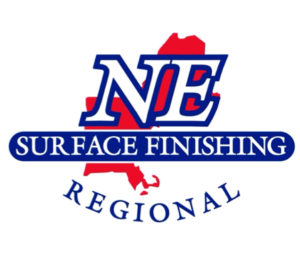
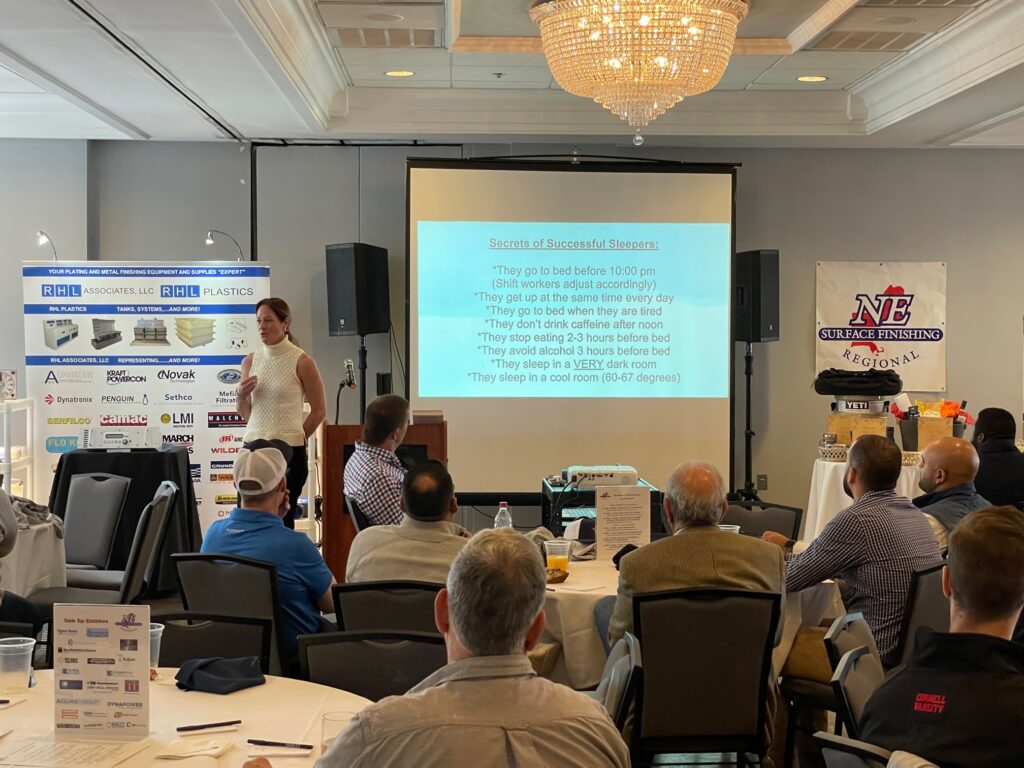
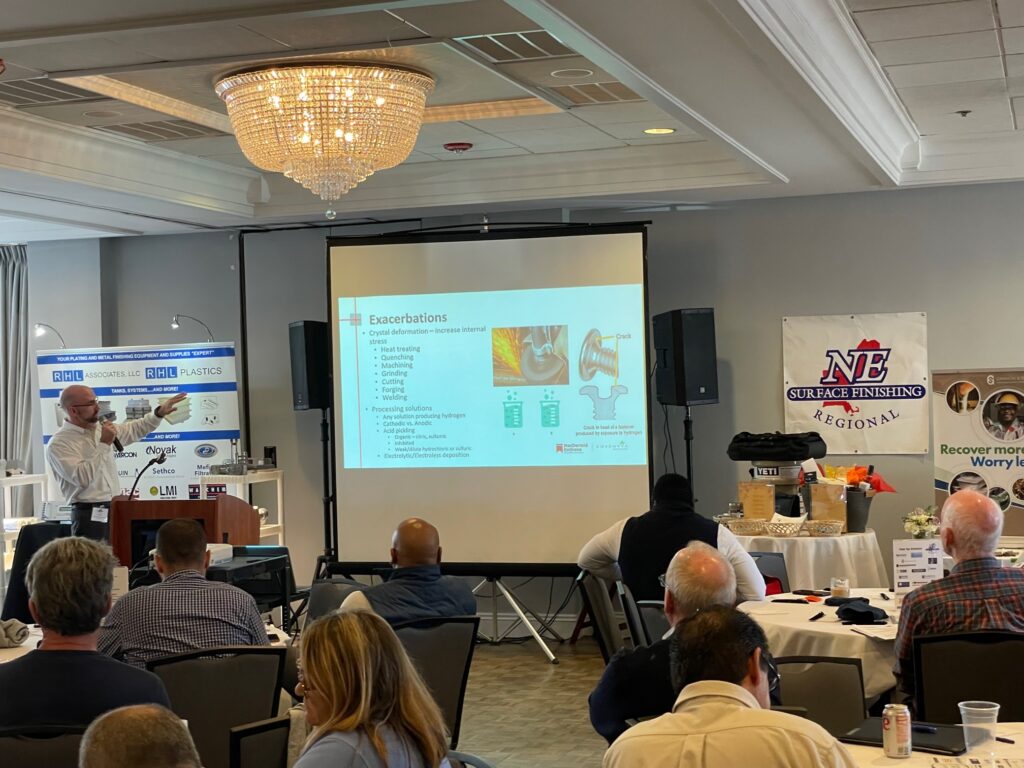
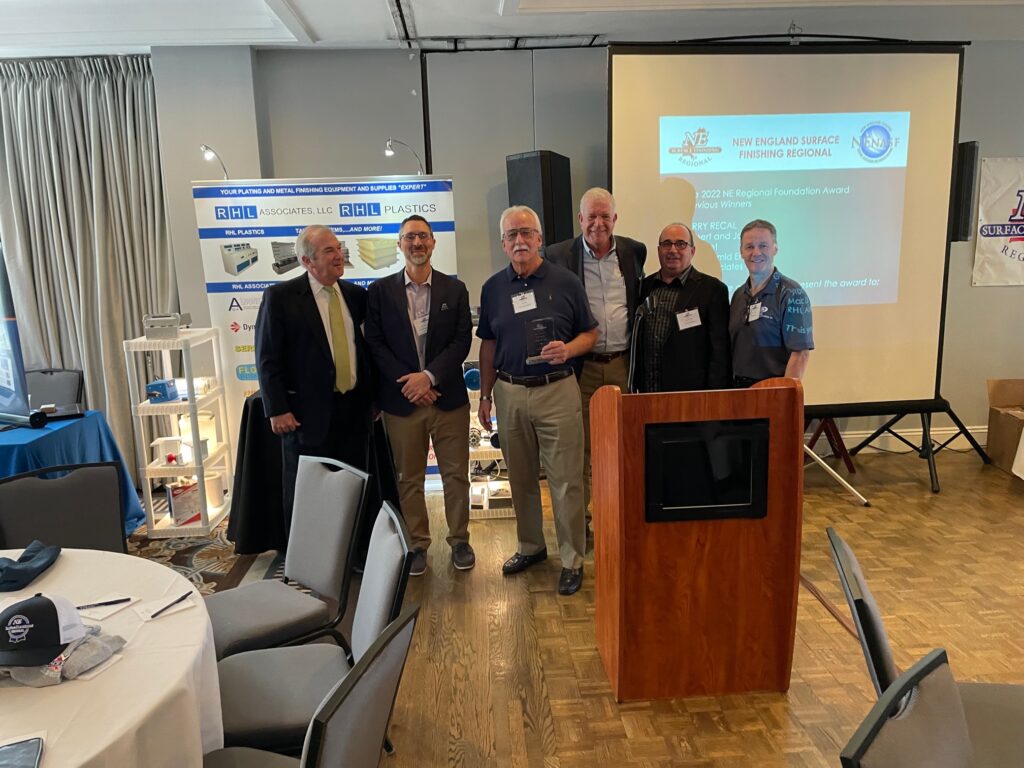
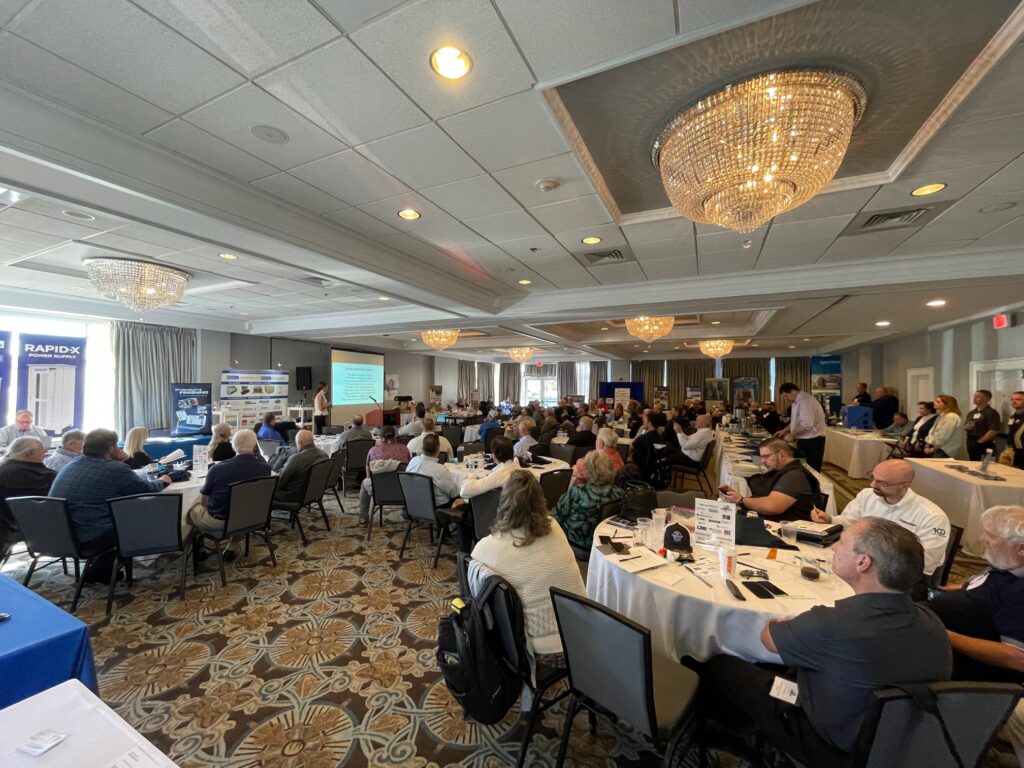
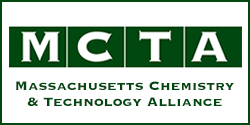


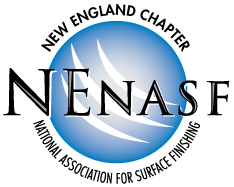


 New England Chapter of NASF is an official chapter of
New England Chapter of NASF is an official chapter of